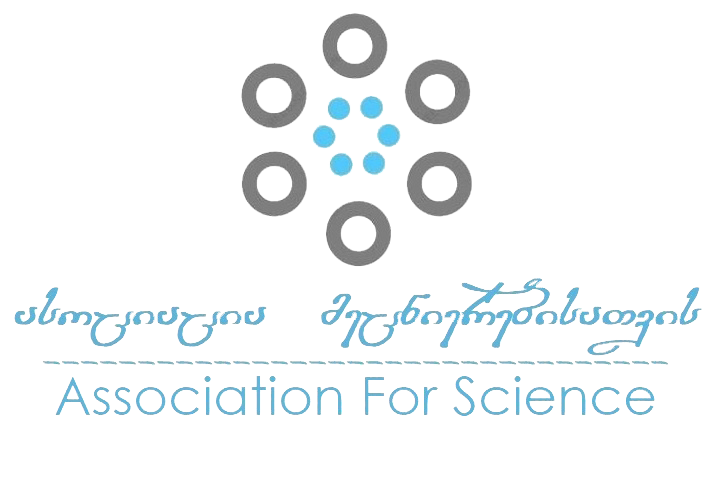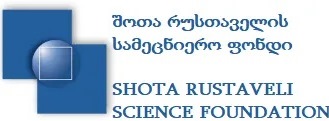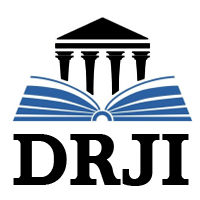ისტორიული მონახაზი კავკასიის პოლიტიკური ერთობისა და თავდაცვის საერთო მექანიზმები
DOI:
https://doi.org/10.55804/TSU-ti-1/Slyeსაკვანძო სიტყვები:
კავკასიის პოლიტიკური ერთობა, თავდაცვის საერთო მექანიზმები, ერთიანი კავკასიაანოტაცია
In this presentation I will provide a preliminary sketch of the idea of Caucasian political unity and common defense arrangements within the Caucasian intellectual tradition. The presentation covers the concepts of centralization, decentralization, confederalism, federalism and regionalism as expressed in the tradition of political thought in the region from the ancient and medieval to the modern period. For the ancient period, I will briefly reference certain recorded tribal alliances or joint defense arrangements, however temporary they may have been. For the medieval period, we will look at the way medieval Georgians perceived the ideal relationship between the different Caucasian nations. For the modern period, we will look at various attempts to mount a regional resistance or stage a regional uprising against the Imperial Russian or Soviet forces as well as review the debates for and against a regional federation for the Caucasus between 1860 and 1921.
წყაროები
Ananias. (1992). The geography of Ananias of Širak : Ašxarhacʻoycʻ, the long and the short recensions.
Hewson, R. Trans. Dr. Ludwig Rechart Verlag.
Anchabadze, G. (2009). The Vainakhs (The Chechen and Ingush). Caucasian House.
Baddeley, J.F. (1908). The Russian Conquest of the Caucasus. Longmans, Green and Co.
Bakradze, L. (2020). The German perspective on the Transcaucasian Federation and the influence of the Committee for Georgia’s Independence. Caucasus Survey 8(1), 59-68.
Baqradze, L. (2010). germanul-qartuli urtiertobebi pirveli msoflio omis dros (qartuli erovnuli komitetis saqmianoba 1914-1918 tsts.) (German-Georgian relations during the time of the First World War [The Georgian National Committee’s activities 1914-1918]). Pegasus Publishing, 2010.
Bammate, H. (1919) The Caucasus Problem: Questions Concerning Circassia and Daghestan. Berne.
Bendianishvili, A. (1980). erovnuli sakitxi saqartveloshi 1801-1921 tsts. (The national question in Georgia 1801-1921). “Mecniereba” Publishers.
Berberian, H. (2019). Roving Revolutionaries: Armenians and the Connected Revolutions in the Russian, Iranian, and Ottoman Worlds. University of California Press.
Berzhe, Ad. (1873). Akty sobrannye Kavkazskoju arxeologicheskoju kommicceju (Acts collected by the Caucasus archeological commission). Tipografija glavnogo upravlenija namestnika Kavkazskogo.
Dzhabadari, I. S. (1907). Protsess 50-ti (Vserossijskaja Sotsial̨no-Revoljutsionnaja Organizatsija 1874-77 g.g.) (Process of the 50s [The All-Russian Social-Revolutionary Organization 1874-77]). Byloe, Zhurnal posvjash̨ennyj istorii osvoboditel̨nago dvizhenija, 2(8/20), 1-24.
Dzhabadari, I. S. (1907). Protsess 50-ti (Vserossijskaja Sotsial̨no-Revoljutsionnaja Organizatsija 1874-77
Prodolzhenie, G.G. (Process of the 50s [The All-Russian Social-Revolutionary Organization 1874-77. Continuation), Byloe, Zhurnal posvjash̨ennyj istorii osvoboditel̨nago dvizhenija, 2(9[21]), 169-192.
Dzhabagiev, V.-G. (1905, Oct. 1). Chto Nuzhno Kavkazu? (What does the Caucasus need?). Sankt-
Peterburgskie vedomosti.
Dzhabagiev, V.-G. (1906, June 2). Kavkaz, Avtonomija i natsional̨nyj vopros (The Caucasus, autonomy and the national question). Sankt-Peterburgskie vedomosti.
erobis tvit martveloba rogor gamogvadeba” (How zemstvo self-government will serve us). (1873, April 2). drosha: qartuli socialuri gazeti.
Fedorov, V. A. comp. Zapiski A. P. Ermolova 1798-1826 (A.P. Ermolov’s notes). (1991). Vysshaja skola.
Giorgadze, G. (1929). tvitmpq̇robeloba da revoliucia: sabutebi revoliucionur modzraobis istoriisatvis saqartveloshi 1870-1902. (The autocracy and the revolution: Documents for the history of the revolutionary movement in Georgia 1870-1902). Book 1. Saxelgami.
Jones, Stephen F. (1987). Russian Imperial Administration and the Georgian Nobility: The Georgian Conspiracy of 1832. The Slavonic and East European Review, 65(1), 53-76.
Jones, S. F. (2005). Socialism in Georgian Colors: The European Road to Social Democracy 1883-1917. Harvard University Press.
Kuromiya, H. and Mamoulia, G. (2016). The Eurasian Triangle: Russia, The Caucasus and Japan, 1904-1945. De Gruyter Open.
Lang, D. M. (1957). The Last Years of the Georgian Monarchy 1658-1832. Columbia University Press.
Lang, D. M. (1962). A Modern History of Soviet Georgia. Grove Press.
Libaridian, G. J. (1983). Revolution and Liberation in the 1892 and 1907 Programs of the Dashnaktsutiun.
In Suny, R. G. (Ed.), Transcaucasia, Nationalism and Social Change: Essays in the History of
Armenia, Azerbaijan and Georgia (187-198). University of Michigan Press.
Nikoladze, N. (1927). Vospominanija o shestidesjatyx godax. Ocherk pervyj (Recollections on the
sixties. First essay). Katorga i ssylka, 4(33), 29-52.
Potto, V. (1887). Kavkazskaja Vojna v otdel̨nyx ocherkax, e̩pizodax, legendax i biografijax (The Caucasian War in different essays, episodes, legends and biographies): Vol. 1. Ot drevnejshix vremen do Ermolova (From ancient times to Ermolov). Izdanie knizhnago sklada V.A. Berezovskago.
ra aris chven shoris sadavo? (nacionalur programis shesaxeb). (What is disputed between us? [about the national program]). (1908, July 27). chveni kvali.
“saqartvelos avṭonomia (gagrdzeleba), III. kavkasiis avṭonomiis sakitxi” (Georgia’s autonomy
[continued], 3. The question of Caucasian autonomy). (1917, April 20). saqartvelo.
Shvelidze, D. (1993). politikuri partiebis tsarmoshoba saqartveloshi, nakveti 1, federalistebi (The origin of the political parties in Georgia, vol. 1, the federalists). Arsi.
Sanadze, M. (2017). The Issue of Geneology of Armenians, Georgians and Other Caucasian Nations in the Historiography of the Middle Ages. Journal of Literature and Art Studies, 7(2), 207-225.
Suny, R. G. (1994). The Making of the Georgian Nation. (2nd Ed.). Indiana University Press.
Ter Minassian, A. (1980, Apr. 24). Nationalisme et socialisme dans le mouvement révolutionnaire
Arménien: 1887-1912. [Paper presentation]. Nationalism and Social Change in Transcaucasia.
Tovsultanov, R.A. & Galimova, L. N. Bej-Bulat Tajmiev-vydajush̨ijsja voennoe-politicheskij dejatel̨ chechni Pervoj treti XIX veka (Bey-Bulat Taymiev as an outstanding military and political figure of
Chechnya in the first quarter of the XIX century). Samarskij nauchnij vestnik, 4 (17), 109-113.
Vacca, A. (2020). “Buldān al-Rān: the many definitions of Caucasian Albania in the early Abbasid period,” in From Albania to Arrān: The East Caucasus between the Ancient and Islamic Worlds (ca. 330 BCE–1000 CE). Ed. Hoyland, R. G. Gorgias Press.
Xozhaev, D. (1998). Chechentsy v Russko-Kavkazskoj vojne (Chechens in the Russo-Caucasian war), ed.
Tamara Mazaeva, section “Tajmi Bibolt.”
Zürrer, W. (1978). “Deutschland und die Entewicklung Nordkaukasiens im Jahre 1918,” (Germany and the North Caucasian Developments in 1918), Jahrbücher für Geschichte Osteuropas, 26(1), 31-59.
ჩამოტვირთვები
გამოქვეყნებული
როგორ უნდა ციტირება
გამოცემა
სექცია
ლიცენზია

ეს ნამუშევარი ლიცენზირებულია Creative Commons Attribution-NonCommercial-NoDerivatives 4.0 საერთაშორისო ლიცენზიით .










